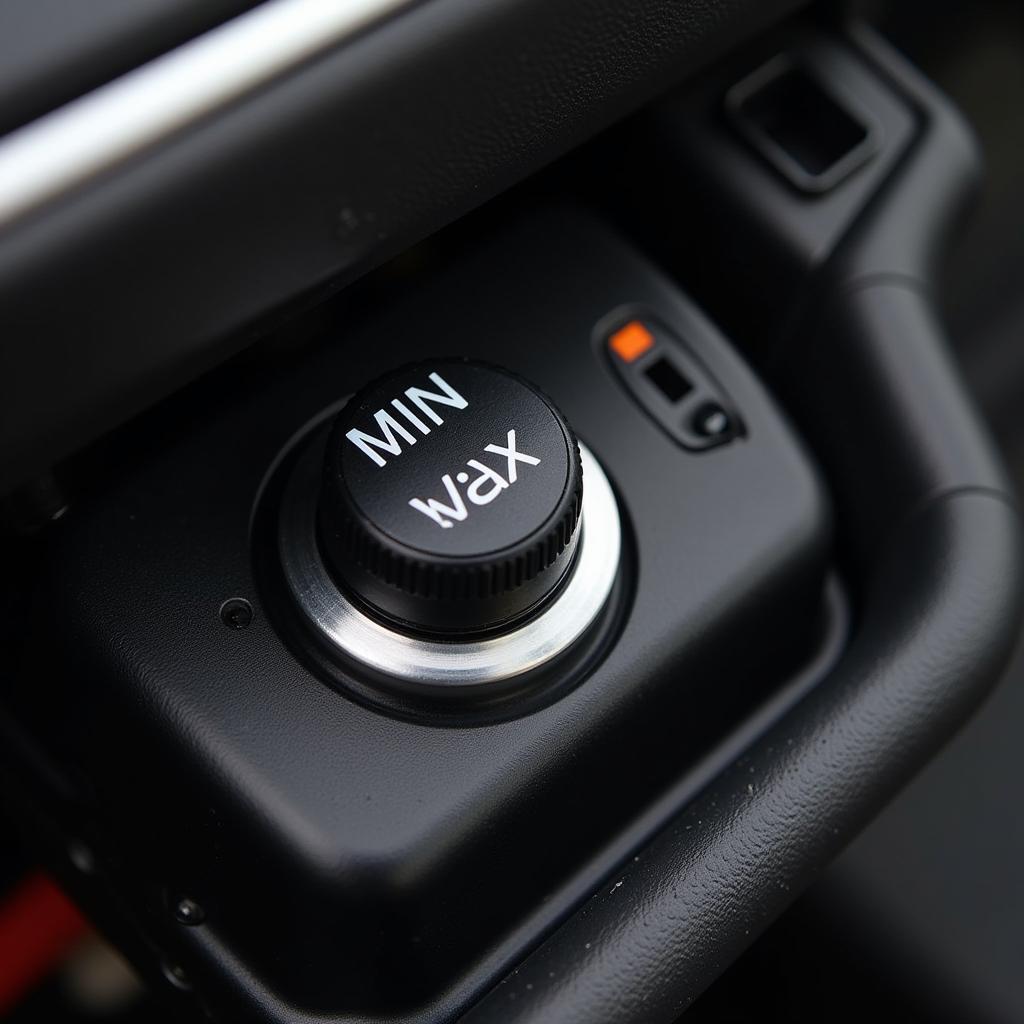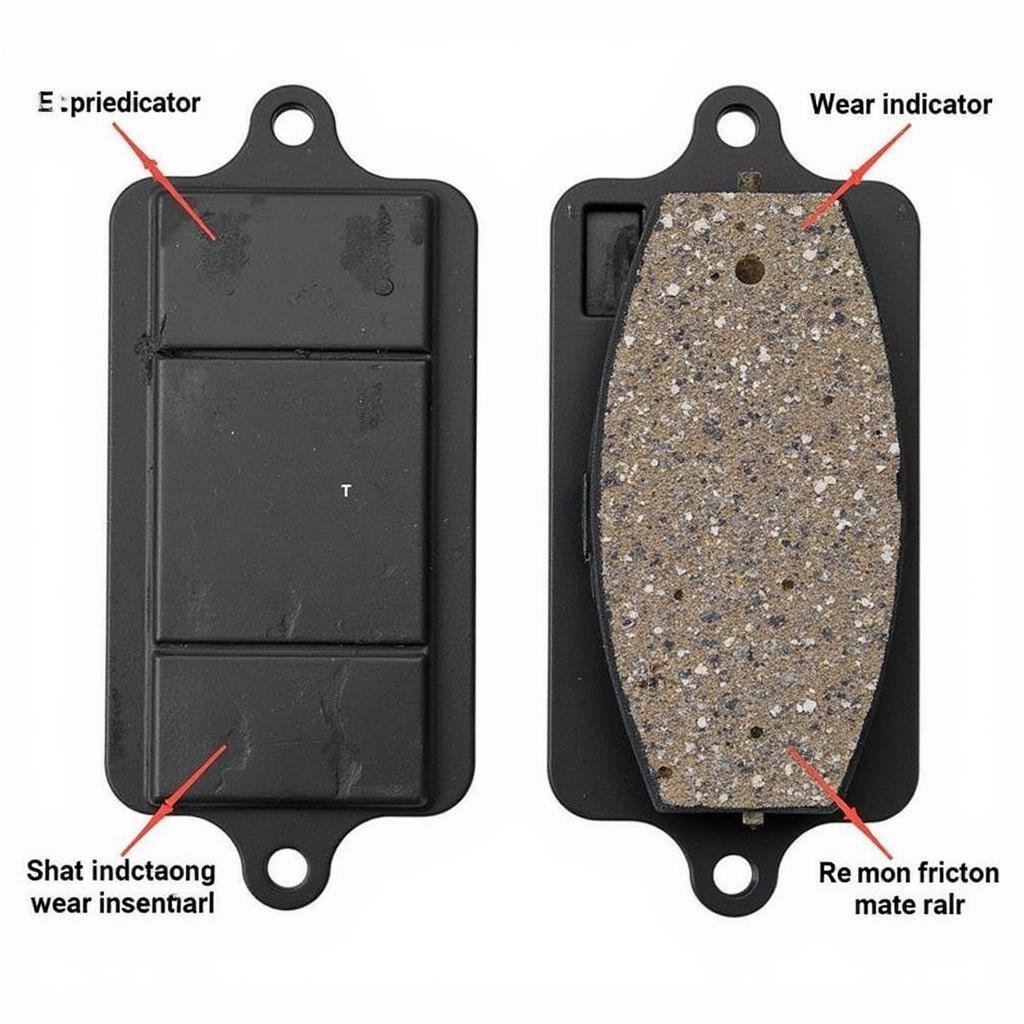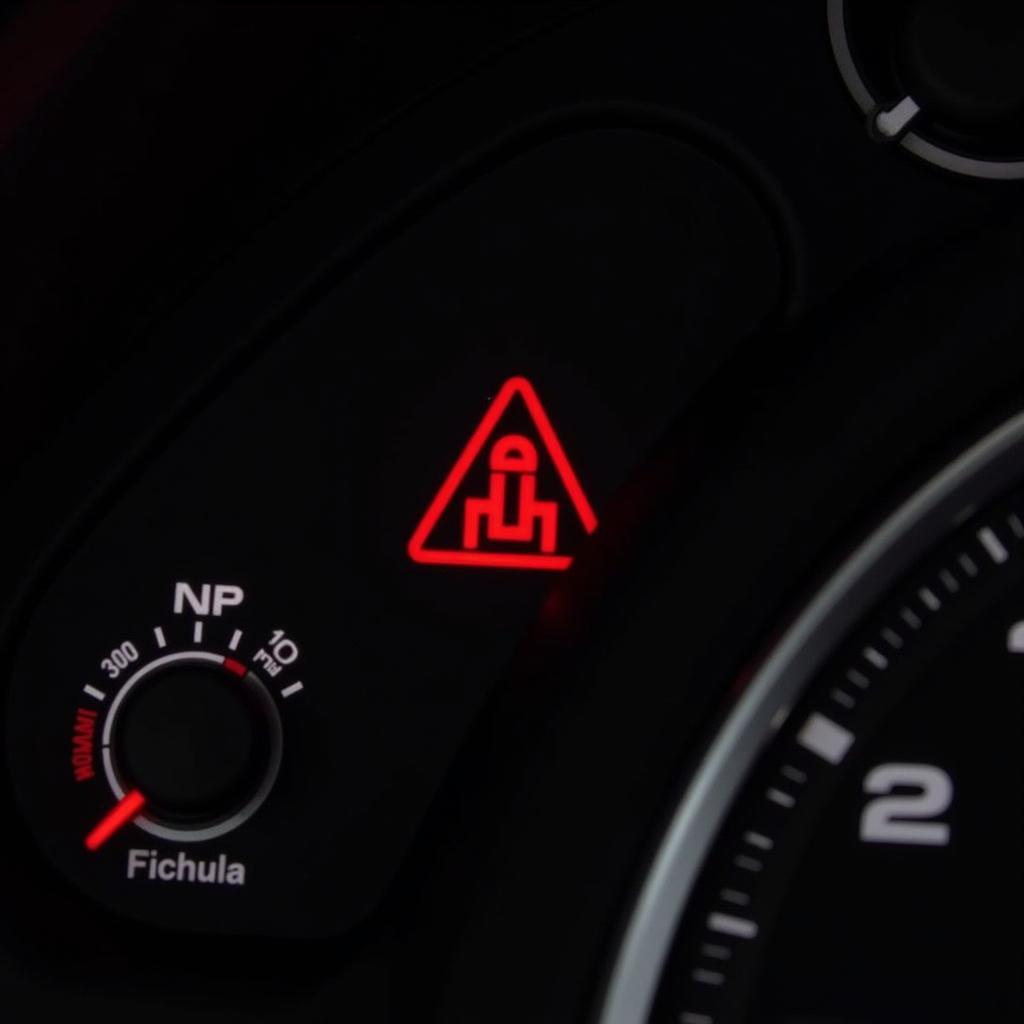The brake warning light on your 2012 Dodge Avenger is a critical safety feature designed to alert you to potential issues within your braking system. Ignoring this warning light can lead to dangerous driving conditions and costly repairs. This comprehensive guide will walk you through the common causes of a 2012 Dodge Avenger brake warning light, provide troubleshooting tips, and offer potential solutions to get you back on the road safely.
Understanding Your Brake Warning Light
The brake warning light on your dashboard, typically a red circle with an exclamation mark or the word “BRAKE,” illuminates when the system detects an abnormality. While a simple reason like a slightly engaged parking brake can trigger the light, it can also indicate more serious problems that require immediate attention.
Common Causes of a 2012 Dodge Avenger Brake Warning Light
Several factors can cause the brake warning light to illuminate in your 2012 Dodge Avenger. Here are some of the most common culprits:
1. Low Brake Fluid Level
One of the most frequent reasons for a brake warning light is low brake fluid. This essential fluid transmits the force from your foot on the brake pedal to the brake calipers, stopping the vehicle.
How to check:
- Locate the brake fluid reservoir under the hood, usually a translucent plastic container.
- Check the fluid level against the “Min” and “Max” markings on the side.
Solution:
If the fluid level is low, carefully add DOT 3 brake fluid, ensuring you use the correct type specified in your owner’s manual. However, low brake fluid often indicates a leak, requiring immediate professional inspection.
2. Worn Brake Pads
Brake pads are designed to wear down over time with use. When they become too thin, a sensor within the pad will trigger the warning light.
How to check:
- Visually inspect your brake pads through the wheel spokes.
- Look for a thin strip of metal sticking out from the brake pad. This is the wear indicator.
Solution:
Worn brake pads need replacement. While it’s possible to replace them yourself, it’s recommended to have a qualified mechanic perform the service, ensuring proper installation and brake system inspection.
3. Faulty Brake Light Switch
The brake light switch, located behind the brake pedal, signals the brake lights to activate when you press the pedal. A malfunctioning switch can disrupt this communication, triggering the warning light.
How to check:
Diagnosing a faulty brake light switch typically requires multimeter testing, best performed by a professional mechanic.
Solution:
A faulty brake light switch will need replacement.
4. ABS Issues
The Anti-lock Braking System (ABS) prevents wheel lockup during hard braking. If the ABS control module detects a problem, it can illuminate the brake warning light.
How to check:
A flashing ABS light, often accompanied by the brake warning light, usually indicates an ABS issue.
Solution:
Diagnosing ABS problems requires specialized equipment. Consult a qualified mechanic or dealership for proper diagnosis and repair.
 Dodge Avenger Brake Fluid Reservoir
Dodge Avenger Brake Fluid Reservoir
5. Electrical Issues
Faulty wiring, a blown fuse, or a malfunctioning sensor can disrupt the brake system’s electrical signals, potentially leading to a false warning light.
How to check:
Troubleshooting electrical issues requires expertise in automotive electrical systems and is best left to professionals.
Solution:
A thorough inspection by a qualified mechanic is necessary to identify and rectify any electrical problems within the brake system.
 Worn Brake Pads on Dodge Avenger
Worn Brake Pads on Dodge Avenger
What to Do When Your Brake Warning Light Turns On
If your 2012 Dodge Avenger’s brake warning light comes on, do not ignore it. Here’s what you should do:
- Safely pull over: Find a safe location to assess the situation.
- Check the parking brake: Ensure the parking brake is fully disengaged.
- Inspect the brake fluid: Check the level and look for any signs of leaks.
- Assess brake pedal feel: Does the pedal feel spongy, go to the floor, or vibrate?
- Listen for unusual noises: Are there any grinding, screeching, or clicking sounds?
If you notice any of the above or are unsure about the cause, do not drive the vehicle. Contact a qualified mechanic or dealership immediately.
Expert Insight
“Ignoring a brake warning light can have severe consequences,” says John Smith, a certified automotive technician with over 20 years of experience. “It’s crucial to address the issue promptly to ensure your safety and prevent further damage to the brake system.”
Preventing Future Brake Warning Light Issues
Regular maintenance is key to preventing brake warning light problems. Here are some preventative measures:
- Regular brake inspections: Have your brakes inspected by a qualified mechanic at least once a year or every 12,000 miles.
- Timely brake fluid flushes: Flush your brake fluid according to the manufacturer’s recommendations to maintain optimal performance and prevent corrosion.
- Pay attention to brake pedal feel: Any changes in pedal feel, such as sponginess or increased travel, should be addressed immediately.
- Address unusual noises: Grinding, screeching, or clicking noises from the brakes warrant immediate inspection.
Conclusion
The brake warning light in your 2012 Dodge Avenger serves as a critical safety indicator. By understanding the common causes and taking prompt action when it illuminates, you can ensure the safe and reliable operation of your braking system and prevent potentially dangerous driving situations. Regular maintenance and prompt attention to any warning signs can help you stay safe on the road.
FAQs
1. Can I drive my Dodge Avenger with the brake warning light on?
It’s highly discouraged to drive with the brake warning light illuminated. It indicates a potential problem with your braking system, which could lead to a loss of braking power and increase the risk of an accident.
2. How much does it cost to fix a brake warning light issue?
The repair cost varies significantly depending on the underlying cause. A simple brake fluid top-up might cost a few dollars, while a complete brake system repair could cost several hundred dollars or more.
3. How often should I change my brake pads?
Brake pad lifespan depends on driving habits and conditions. As a general guideline, brake pads typically need replacement every 30,000 to 70,000 miles. However, it’s best to consult your owner’s manual and rely on professional inspections.
4. Can I check the brake fluid level myself?
Yes, you can visually check the brake fluid level in the reservoir under the hood. Ensure the engine is cold and refer to your owner’s manual for the correct fluid type and location of the reservoir.
5. What should I do if my brake warning light comes on intermittently?
Intermittent warning lights often indicate a developing problem. It’s crucial to have the vehicle inspected by a qualified mechanic to diagnose and address the issue before it escalates.

